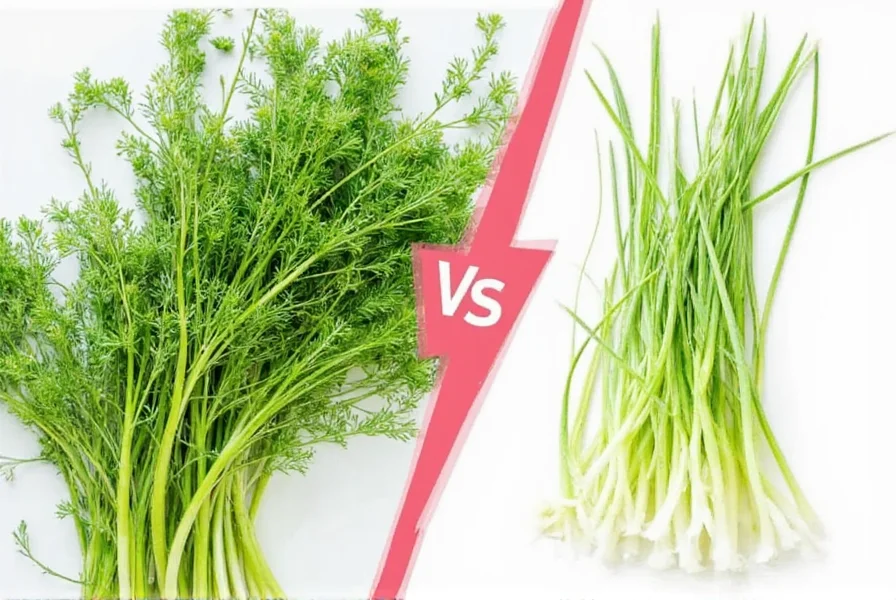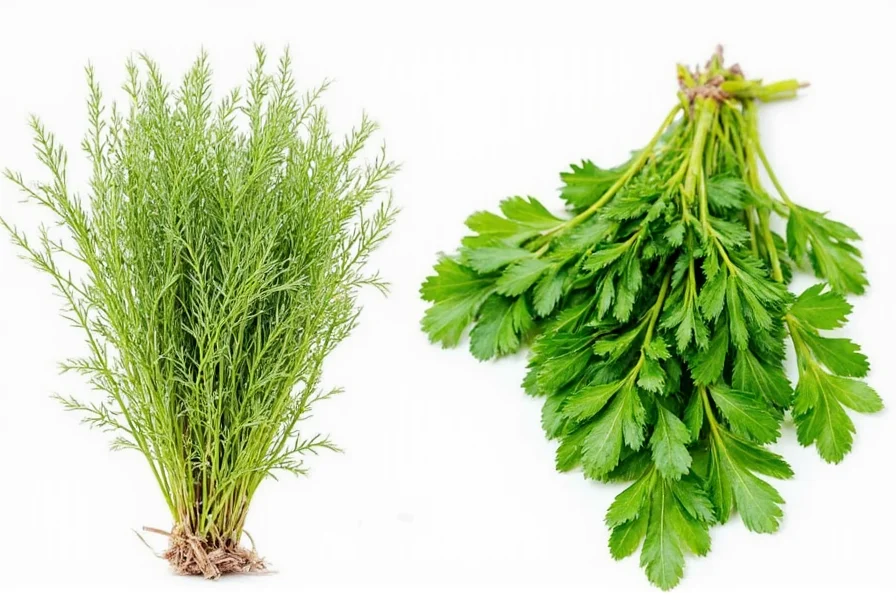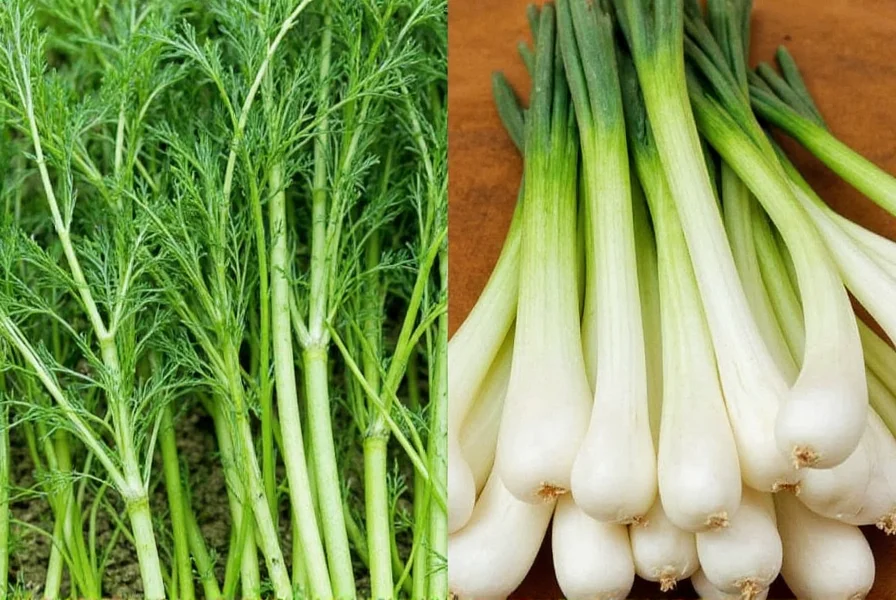Fennel and anise represent one of the most common points of confusion in culinary botany. Despite their similar licorice-like flavors that make them frequent substitutes in recipes, these plants have fundamentally different biological classifications, growth patterns, and culinary applications. Understanding these differences helps home cooks and professional chefs make informed decisions when selecting ingredients for various dishes.
Botanical Distinctions Between Fennel and Anise
Fennel (Foeniculum vulgare) belongs to the Apiaceae family and grows as a hardy perennial plant that can reach heights of 3-5 feet. It features a distinctive bulbous base (the part commonly sold as "fennel bulb" in grocery stores), delicate feathery fronds, and produces small yellow flowers. The entire plant is edible - from the crunchy bulb to the aromatic seeds.
Anise (Pimpinella anisum), by contrast, is an annual herb that grows to about 2 feet tall. It produces small white flowers and its primary culinary value comes from its tiny, crescent-shaped seeds. Unlike fennel, anise doesn't develop an edible bulb and is cultivated almost exclusively for seed production.
| Characteristic | Fennel | Anise |
|---|---|---|
| Botanical Name | Foeniculum vulgare | Pimpinella anisum |
| Plant Type | Perennial | Annual |
| Edible Parts | Bulb, fronds, seeds, pollen | Seeds only |
| Flavor Profile | Milder, sweeter licorice with herbal notes | Stronger, more intense licorice flavor |
| Primary Culinary Use | Vegetable (bulb), herb (fronds), spice (seeds) | Spice (seeds only) |
Culinary Applications and Flavor Profiles
The flavor difference between fennel and anise explains why they're not always perfect substitutes. Fennel bulb offers a crisp, slightly sweet crunch with subtle licorice notes that mellow when cooked, making it versatile in both raw and cooked applications. When sautéed or roasted, fennel develops caramelized sweetness that complements fish, poultry, and vegetable dishes.
Anise seeds deliver a more potent, concentrated licorice flavor that works best in baked goods, liqueurs, and spice blends. Their intense flavor means they're typically used in smaller quantities than fennel seeds. While both contribute to the distinctive taste of Mediterranean and Middle Eastern cuisines, they serve different roles in traditional recipes.

Substitution Guidelines for Cooking
When substituting one for the other in recipes, understanding the flavor intensity difference is crucial. For dishes calling for fennel seeds, you can generally use anise seeds at a 1:1 ratio, but reduce the amount by 25-50% if the recipe specifies fresh fennel bulb. The reverse substitution requires careful adjustment - anise seeds' stronger flavor means using less when replacing fennel seeds.
For raw applications like salads, fennel bulb cannot be replaced with anise seeds as they serve completely different textural purposes. However, fennel fronds can sometimes substitute for other herbs when anise isn't appropriate for the dish's flavor profile.
Nutritional and Health Considerations
Both plants offer notable health benefits, though their nutritional profiles differ significantly. Fennel bulb is rich in vitamin C, potassium, and dietary fiber, with just 31 calories per 100g serving. It's particularly valued for digestive benefits and contains antioxidants like rosmarinic acid.
Anise seeds pack more concentrated nutrition in a smaller package - they're high in iron, calcium, and manganese, but also higher in calories (337 per 100g). Traditional medicine has used anise for centuries to address digestive issues, respiratory problems, and menstrual discomfort, though scientific evidence for some claims remains limited.

Growing Conditions and Harvesting
Gardeners should note these plants have different cultivation requirements. Fennel grows well in USDA zones 4-9, prefers full sun, and tolerates various soil types. It's relatively drought-tolerant once established and can become invasive in some regions due to its perennial nature.
Anise requires warmer conditions (zones 7-10), grows best in light, well-drained soil, and needs consistent moisture during germination. As an annual, it completes its life cycle in one growing season, making it less likely to spread uncontrollably. Harvesting occurs when seeds turn grayish-brown and begin to dry on the plant.
Common Misconceptions Clarified
Star anise (Illicium verum) often enters the confusion but represents a third distinct plant - a spice from a completely different family (Schisandraceae) native to China. While it shares the characteristic star shape and strong licorice flavor, it contains different chemical compounds and shouldn't be confused with true anise.
Another frequent error involves fennel pollen, sometimes called "the truffle of Italy." This highly prized spice comes from the flowers of the fennel plant and offers an intensely concentrated fennel flavor, distinct from both fennel seeds and anise seeds.
Can I substitute fennel seeds for anise seeds in baking?
Yes, but with adjustments. Fennel seeds have a milder flavor than anise seeds, so you'll need to use about 25-50% more fennel seeds to achieve similar flavor intensity. For delicate baked goods, consider using fennel pollen for a more authentic licorice flavor without overwhelming the recipe.
Is fennel safe for people with anise allergies?
Generally yes, since they're botanically distinct plants. However, some individuals with severe allergies may experience cross-reactivity due to similar flavor compounds. Those with known anise allergies should consult an allergist before consuming fennel, especially in medicinal quantities.
What's the best way to store fresh fennel?
Store fresh fennel bulb wrapped in a slightly damp paper towel inside a perforated plastic bag in the refrigerator crisper drawer. Properly stored, it will maintain quality for 7-10 days. Fennel fronds can be stored in a glass of water like fresh herbs, covered with a plastic bag.
Do fennel and anise have different effects on digestion?
Both plants contain compounds that aid digestion, but through different mechanisms. Fennel works primarily as a carminative to reduce gas and bloating, while anise contains more potent antispasmodic properties that can relieve intestinal cramping. Fennel tea is gentler and suitable for children, while anise preparations are typically stronger.
Which plant contains more estragole, the compound of concern in some studies?
Anise seeds contain significantly higher levels of estragole (approximately 80-90% of essential oil content) compared to fennel (4-15% in sweet fennel varieties). While both are considered safe in culinary amounts, those concerned about estragole should use anise more sparingly, especially in medicinal preparations or for young children.
Practical Culinary Recommendations
For Mediterranean dishes like Italian sausage or French bouillabaisse, authentic recipes typically call for fennel seeds rather than anise. In contrast, Middle Eastern spice blends like baharat often feature anise seeds. When making homemade absinthe or ouzo, anise provides the characteristic intense flavor, though some traditional recipes combine both spices for complexity.
Understanding these distinctions between fennel and anise enhances your culinary precision and helps preserve traditional flavor profiles in authentic recipes. While substitution is possible with careful adjustment, recognizing each plant's unique characteristics allows for more intentional and successful cooking.











 浙公网安备
33010002000092号
浙公网安备
33010002000092号 浙B2-20120091-4
浙B2-20120091-4